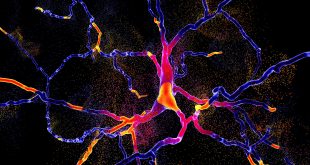As science and medicine evolve, their intersect is resulting in groundbreaking innovation
By Sean Tarry
An incredible breakthrough has recently been made which could significantly alter the way medication is taken by and administered to patients, and lay a foundation for future related developments and advancements.
Researchers at Chalmers University of Technology in Göteborg, Sweden, have invented a new material that enables the use of electrical signals to capture and release biomolecules within the human body. It’s an innovation and discovery of a new method that is far more efficient and cost-effective than anything that’s come before it, and could possibly set the stage for the development of digitized pills and drug implants.
Cost-reducing advancement
Living cells within the human body help to produce biomedicines which are harnessed and used in the treatment of certain types of cancers and autoimmune diseases, in addition to a number of other ailments and conditions. However, these biomedicines are incredibly expensive to produce, rendering their access to researchers and physicians around the world extremely limited. Until now, that is.
The unique new material that’s been invented at Chalmers is a polymer surface that offers researchers and medical professionals an alternative technique that can be leveraged when producing biomedicines, increasing the viability of their creation while also significantly reducing the costs.
Differentiating quality
The new material has been undergoing clinical tests and trials to determine its resilience to different conditions and scope of usefulness. Results of the studies conducted were recently published in the German scientific journal Angewandte Chemie. The published article speaks to the primary benefits of the scientific breakthrough, which are recognized by Gustav Ferrand-Drake Del Castillo, the lead researcher of the project and author of its findings, who explains the differentiating quality of the advancement.
“Our polymer surfaces offer a new way of separating proteins by using electrical signals to control how they are bound to and released from a surface, while not affecting the structure of the protein,” he says.
Potential applications
Consisting of a polymer surface, the new material reacts when receiving an electrical charge, causing it to change states, enabling the capture and release of biomolecules, yielding a number of different potential applications.
One of the most encouraging applications is the possibilities it presents as a tool that can be used to accurately and efficiently separate medicines from other biomolecules that are created by cells during the production of the biological medicines.
This new separating technique, aided almost exclusively by the creation of the new polymer material, dramatically differs from conventional separation techniques. Known as chromatography, the traditional technique affixes biomolecules to the surface in such a taught manner that strong and invasive chemicals are required to facilitate release. This, most often, results in losses and an inferior yield. And, because many modern medicines have shown signs of being highly sensitive to these types of strong chemicals, interruptions in production result, followed by subsequent challenges faced by those working with biomedicines going forward.
Additional benefits
In addition to the incredible scientific benefits that are introduced through the creation of the new material, the invention is also resulting in fantastic consequential improvements as well. Because the new material allows for the creation of greater amounts of biomedicines without the need to use large doses of strong chemicals, the environment also wins. And, what’s more, it can be used repeatedly, through several cycles. In fact, researchers at Chalmers suggest that the process can be repeated hundreds of times without negatively impacting the surface.
Making this invention and scientific discovery even more interesting is the fact that researchers have also found that the new polymer material functions within fluids with what is known as a buffering capacity due to its ability to counteract changes in pH values. It’s a characteristic of the new material that not only supports its effectiveness, it also signifies the potential for the development of new techniques that could be used for implants and digitally-released medicines that are administered remotely by way of electronic activation.
Complementing technology
With respect to its potential uses and resulting benefits, Del Castillo says that the possibilities to complement human intervention while also serving to direct and inform practitioners are innumerable.
“You can imagine a doctor, or a computer program, measuring the need for a new dose of medicine in a patient, and a remote-controlled signal activating the release of the drug from the implant located in the very tissue or organ where it’s needed,” he says. “Being able to control the release and uptake of proteins in the body with minimal surgical interventions and without needle injections is, we believe, a unique and useful property. The development of electronic implants is only one of several conceivable applications that are many years into the future. Research that helps us to link electronics with biology at a molecular level is an important piece of the puzzle in such a direction.”
Supporting future discoveries
Beyond these many benefits and potential uses, Del Castillo identifies another massive advantage presented by the new material. Rooted in the fact that the polymer surface of the electrode is extremely thin—only possible to measure in nanometres—its use does not require as much energy as conventional methods, allowing it to immediately respond to the smallest of electrochemical signals.
“Electronics in biological environments is often limited by the size of the battery and the moving mechanical parts,” explains Del Castillo. “Activation at a molecular level reduces both the energy requirement and the need for moving parts.”
Going forward, Del Castillo believes that the team’s discoveries can benefit the development of further new medicines and techniques for administering them. And, it seems as though he may not need to wait long to see his work through to fruition. Over the course of the past year, the results that were yielded from the work of the Chalmers researchers has been leveraged for product development by Nyctea Technologies, with a line of customers awaiting the technology, including some of the world’s leading pharmaceutical companies, already forming.
 BioLab Business Magazine Together, we reach farther into the Canadian Science community
BioLab Business Magazine Together, we reach farther into the Canadian Science community





